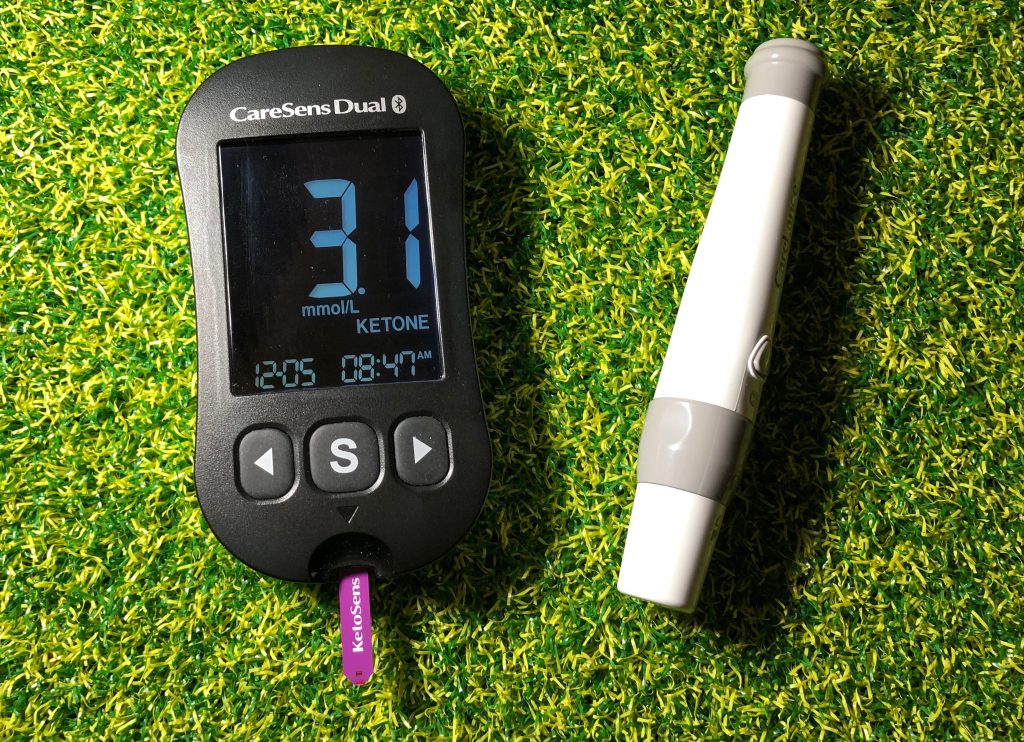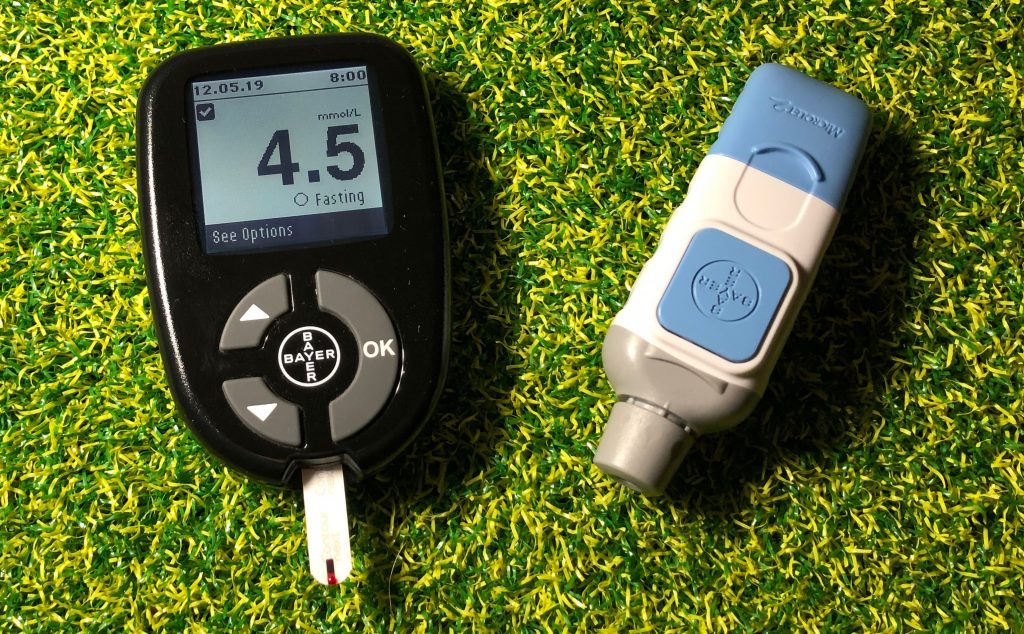My own GP no longer carries out fasting glucose testing, instead, relying on the HbA1c test to indicate if a patient is diabetic. The HbA1c test will show an accurate picture of a patients blood sugar levels over the previous 3 months (providing they don’t have any inflammatory disease as mentioned in my previous post), but it will not show how the patient responds to carbs in a particular moment in time.
Listen to the blog post
Why does this matter?
Well, if all that matters to you is good blood sugar control, then it doesn’t matter, but if you’re looking for a cure for diabetes and not just good blood sugar control, then you want to know whether you’re having a normal insulin response to food or not, and you can’t rely on the HbA1c test for that. If you go on a low-carb diet, which I highly recommend if you are diabetic, then you could be getting a good HbA1c result, but still have an abnormal insulin response to food. For example, you can have your blood sugars under control for months because you’re eating low-carb, but then eat some rice or potatoes, test your glucose levels and find that they are sky high and take hours to come down, showing that you are still very much diabetic, even if your HbA1c test gives readings in the normal range.
My DIY method
When you take a fasting glucose tolerance test, you have blood drawn after fasting from the night before, to get a baseline blood glucose reading. Then you’re given a drink containing a specific amount of glucose, and then an hour later more blood is drawn, from which they can gauge how your body has responded to the glucose. So what I have decided to do before starting my diabetes challenge is to eat a high-carb, highly processed and refined meal, testing my blood sugars before the meal and every hour after for 4 hours, to see how my body responds. I intend to repeat this test every 8 weeks and compare the results. If I can cure my diabetes, then my tests should show improvement over time, eventually culminating in a completely normal response to the carbs. When that happens, I am cured, and not just merely maintaining good blood sugar control.
McDonald’s!
So, my source for my highly processed high-carb meal is McDonald’s. The McDonald’s app makes it easy to work out how many calories I’m getting (around 800) and having a set meal allows for consistency at every testing. In the week before I started my diabetes challenge, I ate at McDonald’s and tested my blood sugar before and after it. I had a large vegetable deluxe meal, holding the mayo, and adding ketchup, with a diet coke. This was it:
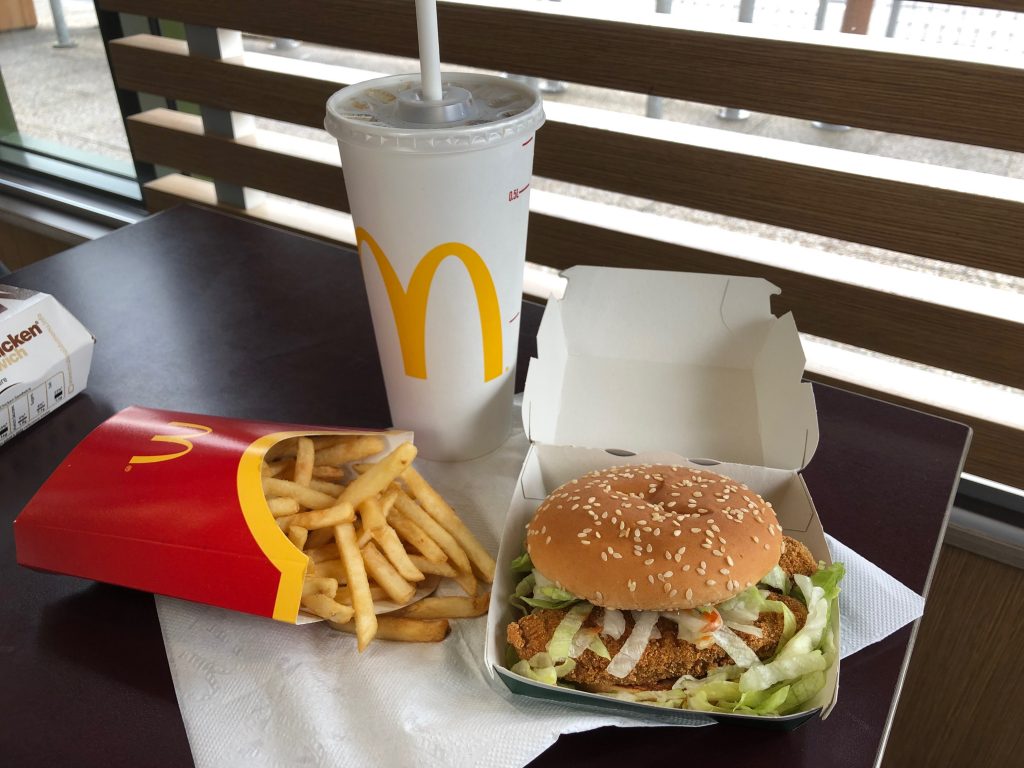
My reading before eating the meal
This was in a fasted state from the day before, so too high to begin with.
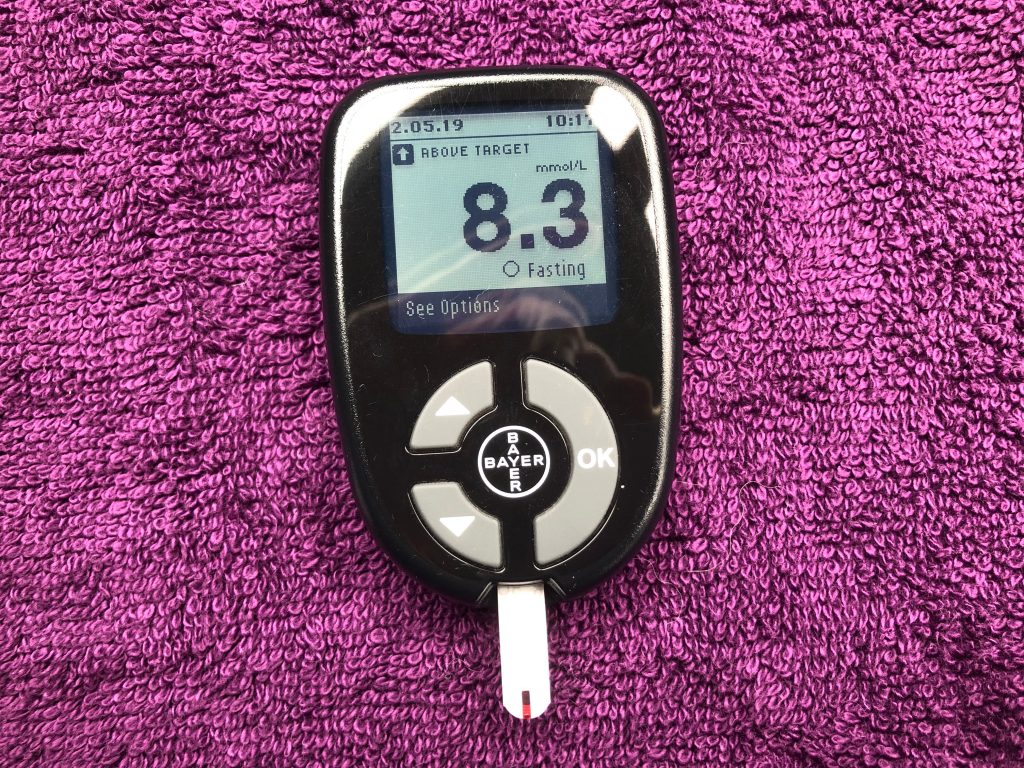
1 hour after eating
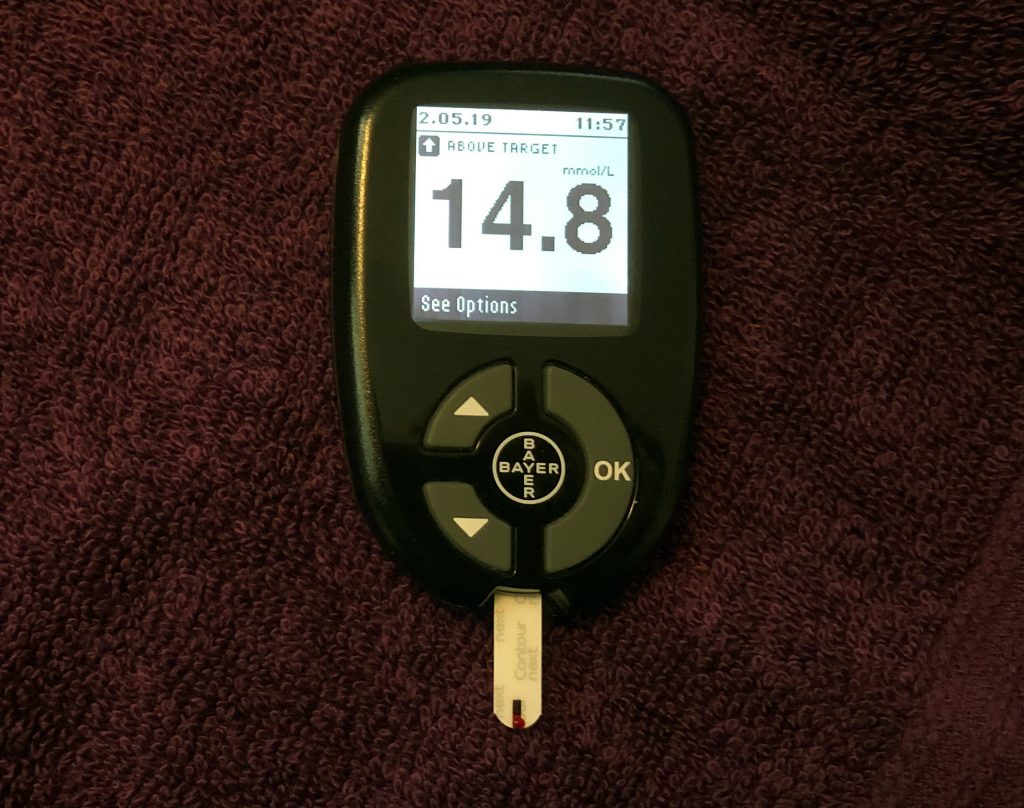
2 hours after eating
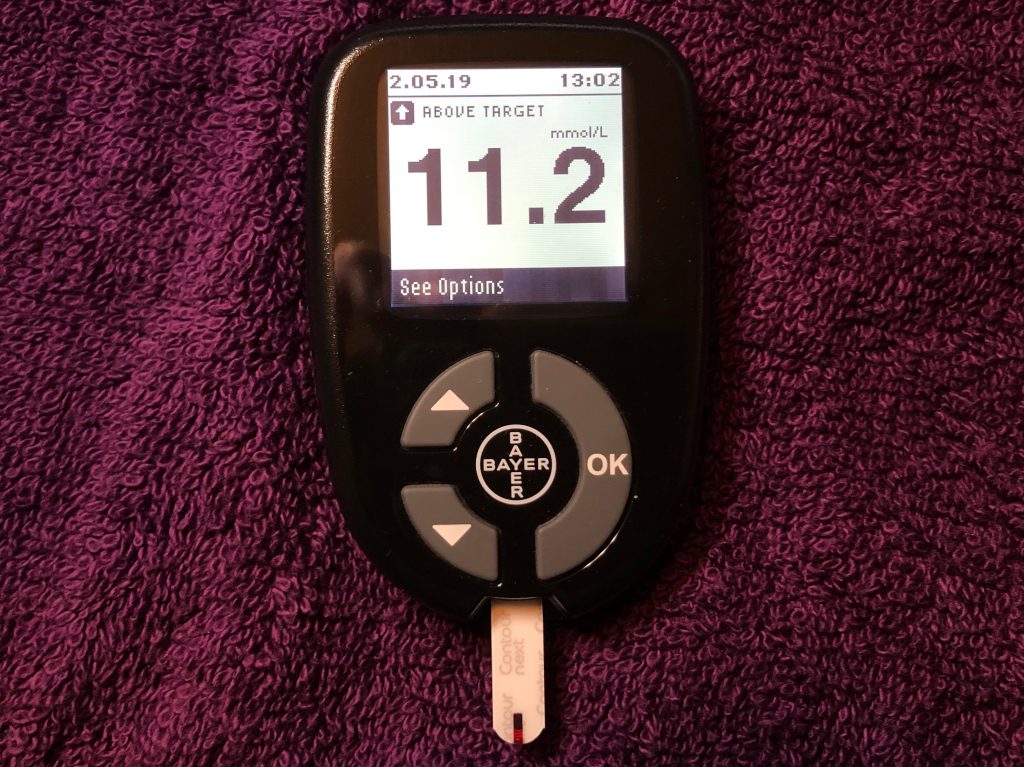
3 hours after eating
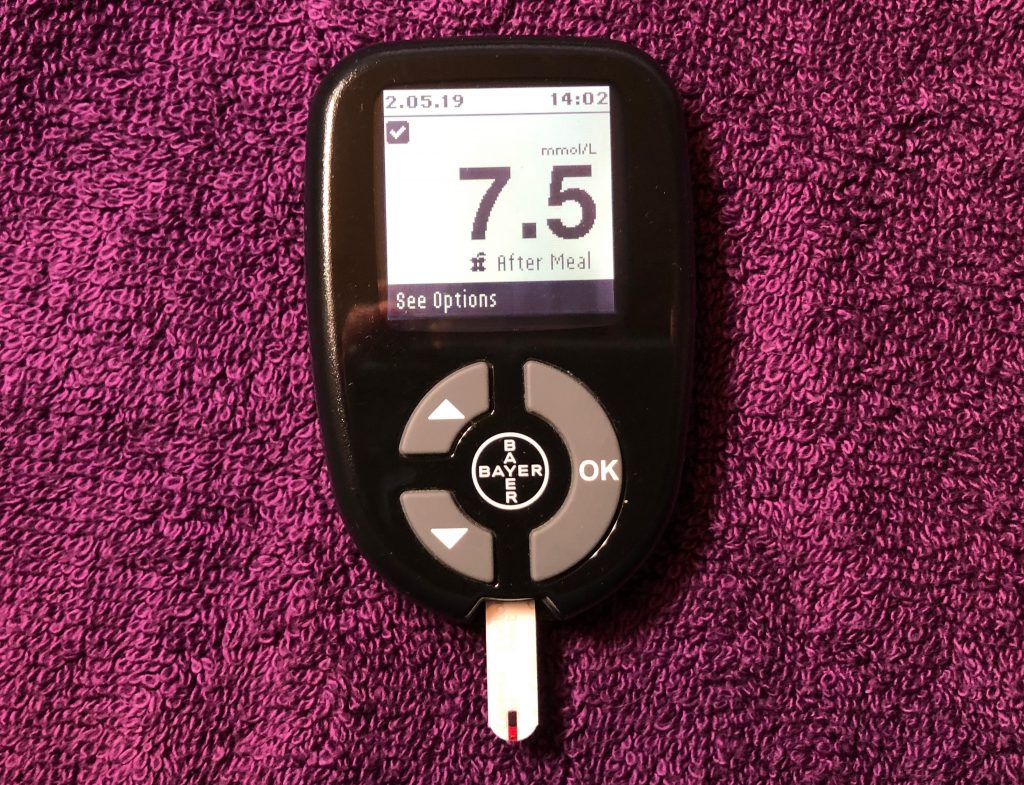
4 hours after eating
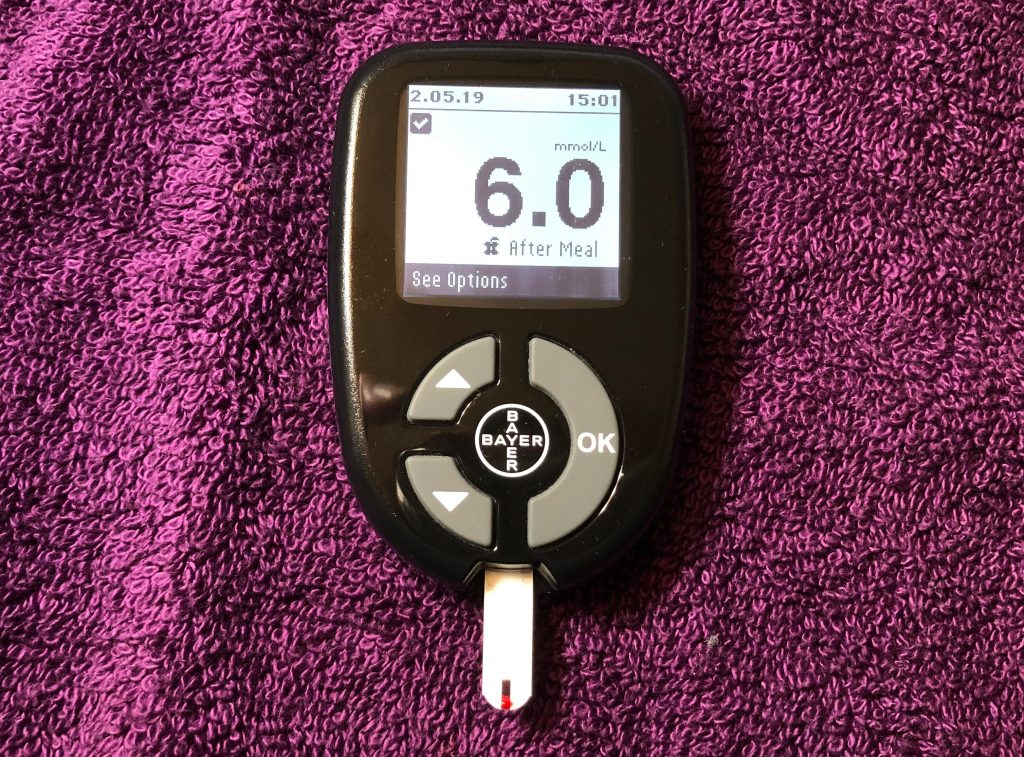
Still too high!
I was hungry and didn’t want to carry on testing to see how much longer it was going to take to get back to normal. I was hungry even in the first hour after eating. Eating highly processed, high-carb food is not filling and seems to make me crave more food.
This was a useful exercise to give me a snapshot of how my body is currently dealing with carbs, which shows clearly that my body can’t cope with them at all well. I’m looking forward to seeing this change over the coming months.
